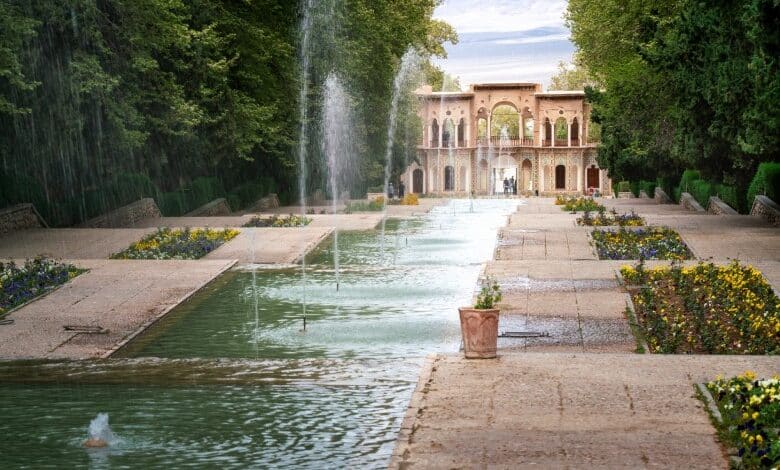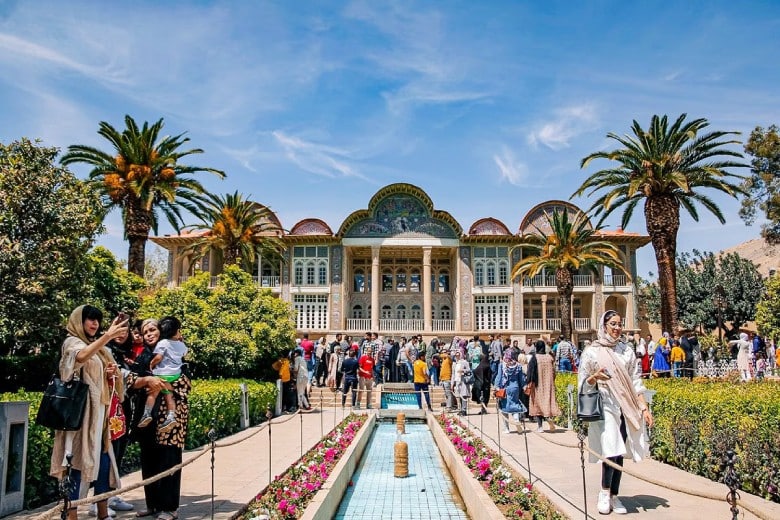Bagh-e Irani: The Essence of Persian Gardens
Harmonious Designs, Cultural Symbolism, and Architectural Elegance

The Persian garden or Bagh-e Irani does not present just a collection of several plants and flowers, nor anything near it-a manifestation of a very complex philosophy with an included cultural story of immense attachment to nature, developed and nourished over many centuries. Within them, Bagh-e Irani is representative of an archetype of Persian horticultural art and, for that matter, an archetype of a tradition that has been in play in shaping the physical landscape of Iran and its cultural and spiritual heritage for centuries.
Contents
Historical Context

The Persian garden harks back to the Achaemenid Empire, which is estimated to have been in power from approximately 550 to 330 BCE. This period laid the beginnings of the concept of paradise gardens. Early designs for such gardens included enclosures and, very importantly, water as an element of life and nourishment in the deserts. While “Bagh” by itself means garden, “paradise” comes from Old Persian as “pairidaēza,” meaning “enclosed park.” In this respect, the naming as both can be understood to point to the notion deeply ingrained in the culture of people who saw a garden not just as an oasis of beauty but rather a sanctuarium for reflection and meeting with nature.
The Islamic era saw the resurgence of Persian garden design most powerfully during the Safavid Dynasty from 1501-1736, when the gardens started to evolve and take on an ideological nature. To the Safavid rulers, gardens were manifestations of divine order-a place where every element, from design and structure to flora choice, carried a deeper spiritual meaning. The Bagh-e Irani epitomizes the conjunction between art, nature, and spirituality in demonstrating ideal Persian Aesthetics.
Design and Structure

On the surface, Bagh-e Irani shows unique architectural and horticultural features. Generally speaking, in most other situations, the Persian garden is characterized by a quadrilateral form where, because of a symmetrical division through crossing by pathways and waterways, its quadri-partite representation signifies the four main Zoroastrian elements of earth, water, air, and fire. Thus, not only is the garden systematically managed within cross-axis, but it also creates balanced conditions that would provoke each one present there to think over every angle by treading around it.
In these kinds of gardens, water is ever-present and most often appears as a fountain, a channel, or a pool. While the burble of water would seem soporific, it cools the air in the hot Persian climate and further makes the garden a haven of retreat. The use of water denotes purity and life; it serves metaphorically for spiritual renewal and further endorses the garden as sacred space.
In the selection of flora in Bagh-e Irani, much relevance is attached. Most of the traditional Persian gardens house varieties of trees, flowers, and herbs like cypress, pomegranate, and rose. Each of the plants has its symbolism-the immortality of the cypress tree and love or beauty represented by the rose. How all these are placed, with colors playing and fragrances diffusing through the air, contributes much more to the senses than it would have visually.
Bagh-e Irani is more than a pretty face; it speaks to the cultural and philosophical mores of the Persian civilization. Gardens were viewed as microcosms of the universe and were perceived to reflect man’s perception of nature itself as being an expression of divine creation. The gardens were expressions of humanity and nature in comfortable cohesion via the interaction of water, flora, and structure.
In Persian literature and poetry, gardens often serve as metaphors for paradise, love, and spiritual enlightenment. Famous poets like Rumi and Hafez have praised the beauty of gardens through their poetry, thus promoting the concept that a garden is a way of connecting the earthly to the divine. Strolling in a Bagh-e Irani is considered a reflective process and a time for tranquility and rumination, away from daily noise and disorder.
In these beautiful gardens, it carries with itself quite a few social and cultural connotations. Traditionally, the Persian garden has served to be a very important location where all family celebrations, poetry recitation, or even discussion of philosophical thought occurs. Such gardens reflect one point of congregation in community and culture, building up shared emotions and identity.
Relevance in Modern Days

In today’s fast world, the ethos of Bagh-e Irani remains relevant to people in their urge for nature amid urbanization and modernity. The principles behind Persian garden design-like symmetry, balance, and the integration of water-can be applied to modern landscaping in a manner that furthers sustainable practices respectful of the environment. Urban planners and landscape architects increasingly acknowledge the therapeutic value of green spaces, echoing the timelessness of the Persian garden tradition.
The gardens of Iran, such as the Eram Garden in Shiraz and the historical Bagh-e Fin in Kashan, stand as living testimony to the tradition of Persian horticultural artistry that endures to this day. Indeed, the Eram Garden, with its tall cypress trees and flowerbeds, is a truly spectacular manifestation of the spirit of Persian aesthetics, where detailed designs are combined in harmony with water features. Similarly, Bagh-e Fin is a garden of rich history and architectural feature that gives a glimpse of the grandeur of Persian gardens, showing their cultural importance in Iranian society. These gardens, put together with Bagh-e Irani, still inspire visitors and still serve as sanctuaries for peace and reflection.

More than that, Bagh-e Irani remains to this day a source of inspiration for artists, writers, and architects worldwide. Clearly, the aesthetic conceptions and the philosophical basis for such gardens share resonance with current themes of environmentalism, mindfulness, and the search for harmony. In times of ecological crisis, the Persian Garden has been constructed as a reminder toward returning to nature and nourishment for the soul.
Conclusion
Bagh-e Irani is not a garden; it reflects the richness of Persian culture and this never-dying human urge for beauty, tranquility, and being in harmony with nature. It encapsulates in its detailed design, symbolic elements, and cultural importance the very soul of Persian gardens-those sacred spaces which nurture inner reflection and community.
As we fumble through the confusions of modern life, wisdom from Bagh-e Irani reminds us with lessons in the mindfulness of balance and celebration through nature’s beauty. He invites us to create our own retreats-be it in the backyard or inside our hearts-so tranquility can be found, creativity sparked anew, and a regard for all life around us rediscovered. In other words, Bagh-e Irani is the real embodiment of the eternal relationship that exists between man and nature; it is a legacy that seems to live on and keeps inspiring generations.
FAQ
Since when did the concept of Paradise Gardens originate?
It has its very origin in the Achaemenid Empire that had a running period from circa 550 to 330 BCE.
Which four elements are represented according to the Zoroastrians in Persian gardens?
Four basic elements that were important in Zoroastrianism – earth, water, air, and fire – can be found in all Persian gardens.
How does Bagh-e Irani stay relevant in modern times?
Bagh-e Irani remains relevant by inspiring sustainable landscaping practices and promoting the therapeutic value of green spaces amid urbanization and modernity.








